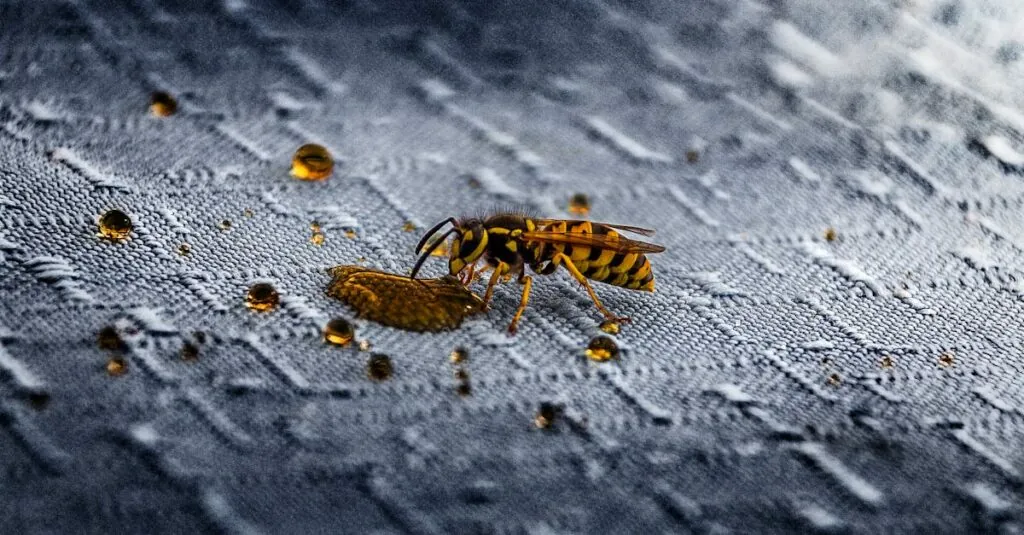Table of Contents
ToggleWhen summer rolls around, the sun shines bright, and outdoor gatherings become the norm, but there’s one unwelcome guest that can turn a picnic into a panic: the yellow jacket. These buzzing bandits are notorious for their aggressive behavior and knack for ruining fun. But fear not! Tackling these pests doesn’t have to be a daunting task.
Understanding Yellow Jackets
Yellow jackets are social wasps known for their aggressive behavior and habit of scavenging for food. Understanding their characteristics and species helps in effective pest control.
Characteristics of Yellow Jackets
Yellow jackets typically exhibit a distinctive yellow and black coloration. Adults range from 0.5 to 0.75 inches in length. Their bodies feature a narrow waist, distinguishing them from bees. Aggressiveness can increase when their nests are disturbed or during food searches. These insects construct nests in various locations, including underground or in wall voids. Yellow jackets primarily feed on sugars and proteins, attracting them to outdoor dining experiences.
Common Species of Yellow Jackets
Several species of yellow jackets exist, each with unique traits. The Eastern yellow jacket is common in the eastern United States and is known for its aggressive nature. The Western yellow jacket appears primarily in the western regions, thriving in diverse environments. The German yellow jacket often nests in human structures, making it a frequent nuisance. Other species include the Southern yellow jacket and the Baldfaced hornet, both of which also pose threats to outdoor gatherings. Understanding these species aids in proper identification and control strategies.
The Importance of Yellow Jacket Pest Control
Yellow jacket pest control plays an essential role in maintaining outdoor enjoyment. Recognizing the importance of managing these pests helps ensure safe and pleasant experiences during events.
Risks Associated with Yellow Jackets
Yellow jackets pose several risks, particularly during warm months. Their aggressive behavior can lead to painful stings, with allergic reactions affecting a small percentage of the population. Stings may range from mild discomfort to severe medical emergencies. Nesting near homes increases the chance of encounters, making awareness crucial. Yellow jackets also disrupt outdoor activities, creating an uneasy atmosphere during picnics and gatherings. In addition, they scavenge for food, posing risks to food safety. Intervening promptly mitigates hazards associated with yellow jackets and safeguards public well-being.
Benefits of Effective Control Measures
Implementing effective control measures offers significant advantages. Proper pest management reduces the likelihood of painful stings, protecting both adults and children. It minimizes the presence of yellow jackets in recreational areas, ensuring comfortable outdoor experiences. Targeting nests decreases the chance of infestations, enhancing the safety of home environments. Additionally, managing yellow jackets supports local ecosystems by maintaining a balance in insect populations. Effective control measures not only improve comfort but also contribute to overall community well-being. Investing in these strategies promotes a safe, enjoyable atmosphere for everyone.
Methods for Yellow Jacket Pest Control
Effective pest control methods help manage yellow jackets during outdoor gatherings. Combining approaches enhances safety and comfort.
Chemical Control Options
Insecticides specifically designed for wasps target yellow jackets effectively. Residual sprays remain active on surfaces, providing long-lasting protection against these pests. Aerosol products deliver fast knockdown effects on contact, reducing immediate threats. Always follow label instructions to ensure safety for people and pets. Local regulations often dictate application times and places for these products. Consider contacting professional pest control services for extensive infestations requiring expert handling.
Non-Chemical Control Options
Physical barriers prevent yellow jackets from accessing outdoor spaces. Netting or screens keep them away from food and gatherings. Traps baited with protein or sugar lure yellow jackets into catch containers, helping reduce their populations. Strategic removal of food sources, such as uncovered trash or food leftovers, discourages their presence. Regular nest inspections allow for early detection and removal, minimizing risks associated with aggressive encounters. Implementing these non-chemical methods aids in creating a safer outdoor environment for everyone.
Preventative Measures for Yellow Jackets
Effective preventative measures can reduce interactions with yellow jackets during outdoor activities. Implementing habitat management and reducing attractants significantly decreases the likelihood of encounters.
Habitat Management
Maintaining a clean outdoor environment can limit the nesting opportunities for yellow jackets. Regularly inspect areas like eaves, attics, and under decks, as these places often harbor nests. Removing potential nesting sites minimizes their presence. Ensuring garbage bins are sealed tightly also prevents them from nesting nearby. Keeping outdoor spaces tidy by clearing debris and food scraps further discourages yellow jacket habitation. Using barriers such as fencing or netting can create a physical deterrent, reducing visibility and access for yellow jackets.
Attractant Reduction
Reducing food sources diminishes the appeal for yellow jackets near gatherings. Properly storing food in airtight containers prevents them from being tempted. Using non-sugary beverages can also minimize attraction since yellow jackets are drawn to sweet substances. Cleaning outdoor eating areas immediately after meals ensures that crumbs or spills do not attract yellow jackets. Employing traps baited with safe lures can effectively draw them away from high-traffic areas. Staying mindful of seasonal changes, particularly late summer when their activity peaks, allows for better planning and management.
Managing yellow jackets is essential for enjoyable outdoor experiences. By understanding their behavior and implementing effective control measures, individuals can significantly reduce the risk of stings and disruptions. Whether opting for chemical solutions or non-chemical methods, taking proactive steps ensures safety during gatherings.
Preventative measures like maintaining cleanliness and inspecting potential nesting sites can further minimize encounters with these pests. With the right strategies in place, summer picnics and outdoor events can remain fun and stress-free, allowing everyone to focus on enjoying the moment without the worry of yellow jackets.







